The future of quadruped robots on the streets
"For entrepreneurs, the epidemic is not the most terrible thing, no money is." When Dogotix's founder Zhao Tongyang said this, it completely hit me.
Indeed, before contacting Zhao Tongyang, I couldn't associate the keywords of "no income for 4 years, 5 people" with a small accomplished robot startup, but in fact, they did just that.
▲The quadruped robot developed by Dogotix turns in circles at the door of the company
Nowadays, when it comes to "robotic dog", most people think of the yellow one. It just exposed the 260 Boston Dynamics robot dog Spot mini that has been sold. And it seems that just after Spot mini announced its sale in June this year, various “robot dogs” at home and abroad have sprung up, and domestic manufacturers such as Huawei and DJI have also stepped into this industry. Crowded.
▲Boston Dynamics Spot mini
However, due to time lag, many "robotic dogs" will inevitably be criticized as "fake products." We can’t get all the stories of robot dogs on the market, but the birth of some robot dogs must not be so simple. After all, to make a “robotic dog” that “can run, jump, and not be afraid of falling” is not just a copy of the code. Made it out.
As various types of "robotic dogs" continue to appear in recent months, Zhixi found from information such as "the latest domestic robot dog debut", "with independent research and development capabilities", and "the price is less than one-tenth of the Boston Dynamics robot dog". The team behind this "domestic robot dog"-Dogotix has enough robots.
According to Dogotix founder Zhao Tongyang, he decided to start robots in 2016. Then why is the establishment of Dogotix at the end of 2019, where did the four disappearing years go? Why did Dogotix only get the angel round of financing in August this year, and launched two new second-generation products in September?
With doubts about the contradictions of time nodes and curiosity about the domestic robotic dog industry, we found Zhao Tongyang, the founder of Dogotix. In the conversation with him, Zhizhi learned the story behind Dogotix and their robot dog.
▲ Zhao Tongyang, founder of Dogotix
01 can run, jump, afraid to fall, but by consumers "Tucao" No official website
The night before the interview with Zhishi, Zhao Tongyang’s circle of friends updated a message: "The first'Smecta' customer is Samsung. We will make products that excite the world, but it is so poor that there is no official website... …"
This joy reveals an awkward circle of friends, and also casts a layer of mystery on Dogotix. What are the products that the Korean giant Samsung will be attracted to? Why is it so poor that there is no official website? The reason for this, let us find out with the dialogue with Zhao Tongyang .
On September 23 this year, Dogotix officially released two second-generation high-performance bionic quadruped robots that have entered mass production. They are the "Big Dog" DG-160A and the "Puppy" DG-48A.
▲Dogotix first and second generation bionic quadruped robots
Among them, "Big Dog" DG-160A has a dead weight of 25 kg and can load 14 kg of heavy objects, with a peak power unit torque of 180N.m; "Puppy" DG-48A has a dead weight of 13 kg and can load 6 kg of heavy objects, with peak power unit The torque is 48N.m, both of which take into account the requirements of load-bearing and high dynamic performance.
As a "robotic dog", in order to prove its own strength, it is inevitable to match the "destiny" of the "excellent job"-Boston Dynamics Spot mini, and in the performance benchmarking table of public data on the Internet, Dogotix's "big dog" DG-160A not only has not been "crushed" by Spot mini, it is even better in terms of running speed, built-in battery life, etc. The most important thing is that the price of "Big Dog" is only a dozen points of Spot mini one.
▲Dogotix's second-generation quadruped bionic robot benchmarked with Boston Dynamics Spot mini, data source: public data from Robot Lecture Hall and provided by Dogotix
Zhao Tongyang said: “For a footed robot, walking well, walking fast, and walking steadily are the most basic requirements. Our newly launched second-generation products have implemented hardware and algorithms such as motors, controllers, and detectors. Improvement. In terms of power, the second-generation product is 8-10 times higher than the first-generation product, with stronger load capacity and faster running. In terms of algorithm, the stability and impact resistance of the second-generation product are also somewhat Promote."
"This time we have also upgraded the transmission. In the past, the traditional belt was used for transmission, which was easy to slip and has a high rate of wear and tear. This time, the improvement to the leg link transmission mechanism solved these problems."
"The second-generation'dog' has a bigger belly, and users can put more things in the'dog belly'." Zhao Tongyang said, "There are three prerequisites for the bionic foot robot to enter thousands of households. One is stable and durable enough. The machine itself; the second is the retail price acceptable to consumer-level groups; the third is the ability to actually solve family affairs."
"Our first-generation products are mainly for research institutes and universities, for researchers to conduct research; the second-generation products are mainly targeted at B-end users in terms of mechanical ontology, and entering the C-end market also requires security It will take a while for us to achieve greater improvements in terms of functionality, functionality and practicality."
In addition, in terms of battery life, the Dogotix team also applied autonomous wireless non-contact charging and solar charging based on machine vision to these two robots. When the robot is working indoors, it can autonomously detect its own power, and completely autonomously find its own non-contact wireless charging pile and complete autonomous charging when the power is insufficient; when the robot is working outdoors, the solar panels on the robot housing are also It can help the robot complete autonomous charging. In this way, even if the robot dog leaves human beings, it can survive and perform neural network evolution.
▲Solar panels on the housing of the Dogotix quadruped robot
In terms of cost, the reason for the lower price of Dogotix is partly due to the unique geographical location of Shenzhen. Zhao Tongyang said: “Shenzhen’s manufacturing capacity is very strong, so we have a lot of components here that can be produced at very low prices. In addition, we are different from the solutions adopted by Boston Dynamics. The manufacturing cost of the Boston Dynamics robot dog is different. It is basically 10 times that of ours. They position the robot dog as a "special product", and we position the robot dog as a "consumer product"."
Zhao Tongyang told Zhishi that quadruped robots are a comprehensive discipline and an emerging industry. From hardware, software to low-level motors, they are constantly iterating. Therefore, many technologies require team members to learn more by reading papers and checking materials. ,Devolop product.
What’s more difficult is that they are not backed by Google and Softbank like Boston Dynamics. The four years of Dogotix's product development are like watching eight pack abs eating a fat-reducing meal, relying on the dream of being a robot, difficult and hopeful forward.
02 Eight people spent four years making robot dogs, and they were overcoming obstacles on the road to "mercury retrograde"
Through public business information channels, it can be found that Dogotix was established in November 2019 and launched the first-generation robot dog at the end of 2019. In August this year, it received an angel round financing of 5 million yuan in ropeway investment, and launched two second-generation models in September. Robot dog.
The speed of Dogotix's growth is surprisingly fast, and when I guessed and asked, "Is there a huge team behind the company's efficiency," Zhao Tongyang's answer surprised me again. He said: "This year Before August, our company had only 8 core technical personnel together. These 8 people perform their own duties, including software algorithm engineers, mechanical design engineers, hardware circuit engineers, embedded engineers, etc., and a "lady" for logistics At work, those of us have met in the network "technology development circle" and have gathered together and have been working hard for a dream."
Zhishi's doubts about the contradictory timing of the company's establishment and product launch will also be solved in this dream-filled story.
Zhao Tongyang's robot dream will start in 2012. Affected by his family, Zhao Tongyang at the time lamented the fragility and shortness of life. He began to wonder if he could create eternal life and be able to accompany mankind forever. In this way, Zhao Tongyang, a major in automation control, turned his attention to bionic robots and decided to continue his life in a robot way.
Each stage of the realization of the dream was not smooth sailing. At that time, Zhao Tongyang knew very well that in 2012, there were very few experiences in the field of bionic robots in China. If we started to develop bionic robots at that time, it would be as difficult as entering no man’s land.
At that time, coincided with the rise of the Internet of Things industry, Zhao Tongyang, a university graduate, began to get involved in the Internet of Things industry and founded Shenzhen Anxinke Technology Company.
Four years have passed. By 2016, the company has grown from one person to 100 people. Zhao Tongyang also has a certain amount of capital in his hands. He thinks it is time to pursue his dream and become a robot. Therefore, he decisively transfers shares and invests in the wave of bionic robots for the second time.
But just like Lei Jun said, "Entrepreneurship is not something people do," Zhao Tongyang's second entrepreneurial experience was not smooth. First of all, from choosing products, Zhao Tongyang and his team took a big turn.
In line with the original intention to accompany life and be a "soul" robot, Zhao Tongyang entered the biped robot industry, but he soon discovered that biped robots have technical requirements for balance and stability, motion software algorithms, and power output. High, the development is more difficult, so the cost is also high, even if it is made at that time, there will not be too many people paying the bill. Biped robots and quadruped robots have very similar requirements in the research and development of the mechanical body. Therefore, he aimed at the quadruped robot market and started the research and development of the bionic quadruped robot-the "robot".
In terms of capital, Zhao Tongyang once again encountered difficulties because of the focus on R&D and the company's pure investment was not profitable. From the start of a robotics company to the launch of a relatively mature robot dog by Dogotix, Zhao Tongyang’s company "died" twice due to a shortage of funds. In other words, the Dogotix that helped him usher in the dawn was the third robot company he founded in four years. .
"Mercury retrograde" never patronizes only once. Just when Zhao Tongyang and his team thought that their quadruped robot was about to be successfully developed, the news of the open source of the MIT (Massachusetts Institute of Technology) quadruped robot "Mini Cheetah" in 2019 was like a thunder, giving They hit them hard.
▲MIT’s quadruped robot "Mini Cheetah"
When learning that the cost of developing MIT quadruped robots was very low, Zhao Tongyang and his team members felt that their efforts were in vain. Being "robbed" for the "starter", the product has no advantage, and the team fell into despair for an instant. But God seems to favor people who don’t give up. After adjusting their mood, they took MIT's open source materials to study carefully and found that the robot dog developed did not work well, so they also learned that good products cannot be produced without open source files. The accumulation of technology is still the confidence of their research and development.
Zhao Tongyang understands that the perfection of quadruped robot technology requires continuous iterations of both theory and practice. It is calculated as one, and the products produced may be different. In this field, practice and theory complement each other, even for Boston Dynamics and MIT. , It is not only supported by papers, but also through several generations of product iterations to verify their algorithms in practice, and continuous improvement of performance can achieve a balance between theory and practice in products.
Then, Zhao Tongyang and the team regained their mood and overthrew the past technology and restarted. In terms of hardware, they try to reduce the weight of the mechanical body and increase the torque to increase the rotation speed, so that the robot can move stably and flexibly. In terms of software, in order to enable the robot dog to avoid obstacles and walk stably, they equipped the robot dog with a whole-body motion control algorithm to ensure the sensitivity of the robot dog and keep its body in a stable state.
The first-generation robotic dog developed by Dogotix is finally available. Although the first-generation robot dog of Dogotix has been questioned due to its similar appearance to the MIT robot dog, everyone in the Dogotix technical team knows that the first-generation robot dog is all its own technology.
This robot dog can flip, roll, pull carts, walk and jump on the ground of different materials, and can automatically maintain balance when subjected to external forces... The launch of the first Dogotix robot dog has attracted the attention of domestic robot enthusiasts.
▲Dogotix's first-generation quadruped robot performs a backflip
▲Dogotix's first-generation quadruped robot walks on a cart
Next, Dogotix will continue to increase investment in the robot's mechanical body and power system, and focus on the research and development of application layers such as visual recognition, autonomous navigation operation, and collaborative control, and develop bionic foot robots suitable for applications in different scenarios.
Zhao Tongyang told Zhishi: "Our robot dogs can be searched on major e-commerce platforms. At present, the first generation of robot dogs has sold 100 to 200 units." At the same time, according to the information we have learned, Dogotix is the first. The unit price of the second-generation product is 18,000 yuan, and it has been continuously supplied in batches with a delivery period of 1 to 2 weeks; the second-generation product "Big Dog" DG-160A and Puppy DG-48A are also being planned for mass production after the launch. In addition, Dogotix also plans to launch the third-generation bionic foot robot in the first half of next year.
▲Dogotix quadruped robot product picture on Taobao
In this way, if Samsung can't find the official website of Dogotix, it may be possible to find the Dogotix robot dog that Samsung wants to buy by moving to Taobao stores and Amazon.
Zhao Tongyang said that he will invest the newly-financed 5 million yuan in three aspects: expansion of R&D team, product upgrade and commercialization, and establishment of standardized production workshops. He hopes to improve existing products while selling them at home and abroad. He thinks that when the quadruped robot is on the right track, he will continue to pursue the dream of biped robots and finally realize the dream of having a "soul" robot accompany people.
03 "People with four legs" or enter the family scene
From beginning to end, Zhao Tongyang regarded the robot dog he and his team developed as a "four-legged person" rather than a "machine tool". In Zhao Tongyang's eyes, four-legged robots have unlimited imagination, and they are a group of " Creatures with life and soul".
Zhao Tongyang told Zhishi: "The robot dog has a wide range of uses. It can help with logistics and distribution, power inspections, fire rescue... It can go to dangerous areas that humans cannot go or are inconvenient to go to and help humans complete tasks."
"What we can do is to do a good job of the machine body, and then open source and open the interface, allowing customers to develop targeted software for different scenarios. This is also the biggest difference in our robots."
Currently, Dogotix's "Big Dog" DG-160A and "Puppy" DG-48A can be equipped with additional components such as robotic arms, lidar, AI, and 3D modeling for use in different scenarios.
In Zhao Tongyang’s robot blueprint, he said that in the next 12 months, Dogotix should have a family-oriented four-legged robot that can accompany family members like a real “dog”. This “dog” can have Emotional, able to be angry, able to expect, able to be happy, able to accompany the elderly and children.
In terms of function, this "dog" can monitor the heartbeat of family members, monitor the mental state of the elderly, and observe the situation of the elderly through machine vision, and alarm when the elderly falls and other abnormal conditions. Zhao Tongyang said that the future four-legged robot can realize the role of family companion and family protection.
Zhao Tongyang said: "Four-legged robots are a long-term business, and we will continue to do so. We have been able to see our'robotic dogs' on the street. This is considered to be more than half of our business success. This point also proves that we still have a lot to improve."
"On the other hand, we will not be limited to only four-legged robots, but also bipedal robots. At the beginning of our business, we gave up doing bipedal robots because of immaturity in various aspects. I still hope that in the future biped robots can enter all walks of life, and even enter the family. When we get old one day, we will find that many of us who accompany us are robots."
Zhao Tongyang’s robot blueprint does not seem to be a corporate plan, but instead links the future of the product with his own life plan.
04 Overview of domestic foot robot players
Although abroad, the footed robots developed by Boston Dynamics, which has 20 years of technology accumulation, continue to win people’s attention, but domestic footed robots are not weak in research and development. As early as more than ten years ago, domestic universities have already Involved in the research of footed robots.
In 2017, Shandong University lasted ten years to build a large four-legged robot-Shandong version of the "robot dog". In the University Robotics Competition two years later, the flexible robots displayed by the Harbin Institute of Technology Competitive Robotics Team were even more amazing.
▲Shandong version of "robotic dog"
▲HIT Robot "Treading Waves"
According to Dogotix, the bionic foot robot is a comprehensive discipline that gradually faces the market after years of hardware improvement and theoretical algorithm iteration. In the past research results of footed robots, many use hydraulic solutions to provide power, but this solution is difficult to solve the shortcomings of excessive weight and noise. With the introduction of the electric scheme, the weight and noise have been greatly reduced, and the footed robot has gradually entered people's field of vision.
In recent years, the domestic foot robot market has gradually become lively. There was a "hot search" on the Yushu robot dog before, and then there were excellent humanoid robots participating in the 40th anniversary party of the Shenzhen Special Economic Zone. It can be seen that there are more and more teams exploring the field of foot robots in China, and Zhao Tongyang and His team is just a microcosm of most domestic bionic foot robot dream chasers. From the constantly upgraded robots, we seem to be able to see the persistence and persistence of these dream chasers to bionic foot robots.
▲ Yushu’s four-legged robot "Laikago" (Laikago)
05 Conclusion: The future of quadruped robots on the streets can be expected
"Five people" "4 years of pure investment without profit" "With independent research and development capabilities" "Second-generation robotic dog sales" These keywords are like medals, engraved in the development history of Dogotix.
Looking at the robotics industry where large factories and well-known universities gather, Zhao Tongyang and his Dogotix seem to be a "mudslide" in this environment, aiming at the target with great power.
Although the "quadruped robot circle" is gradually growing and becoming lively, the industry is still in its early stages. Maybe a year later, four-legged robots walking on the street and accompanying humans will be like Zhao Tongyang said, no longer imagined.

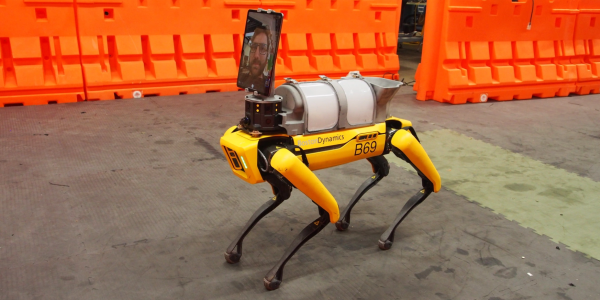

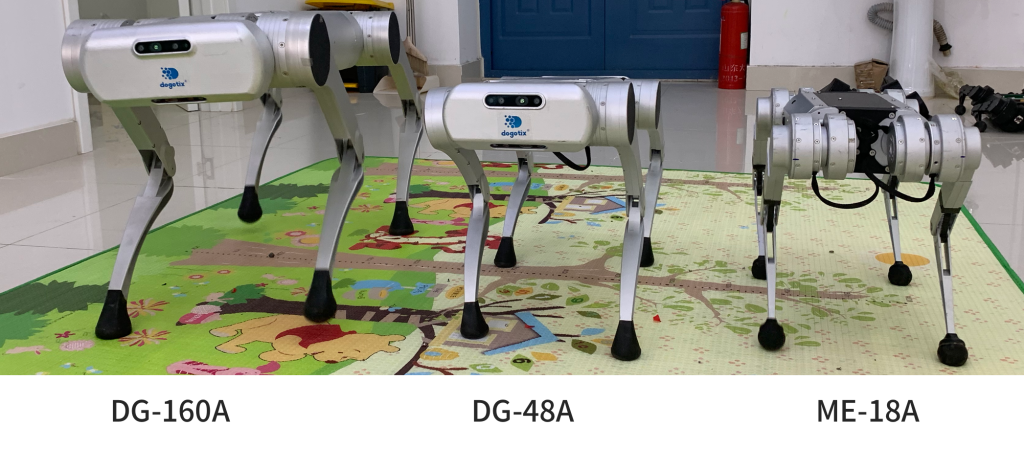

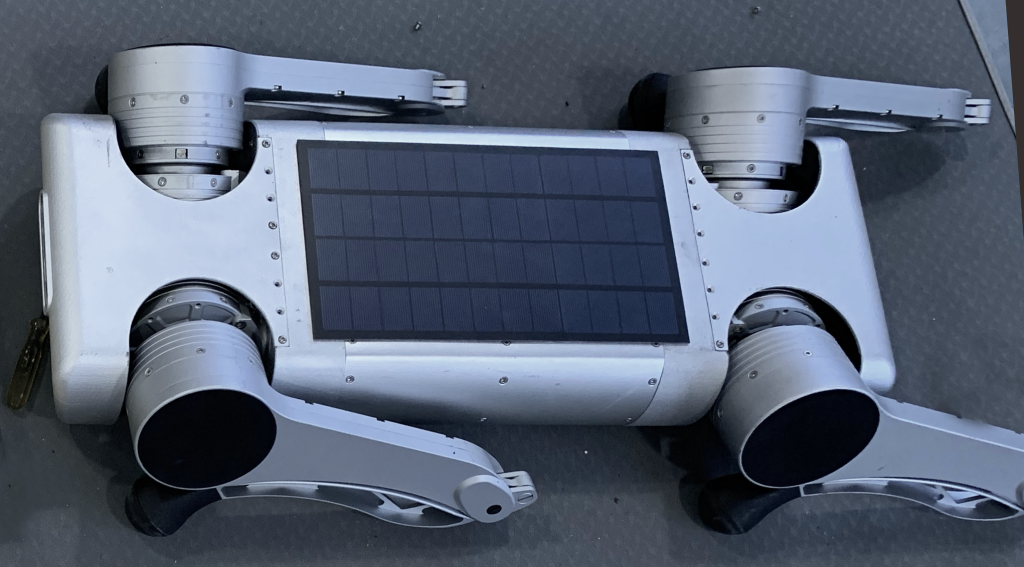
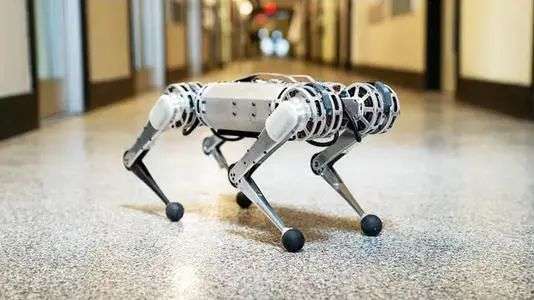
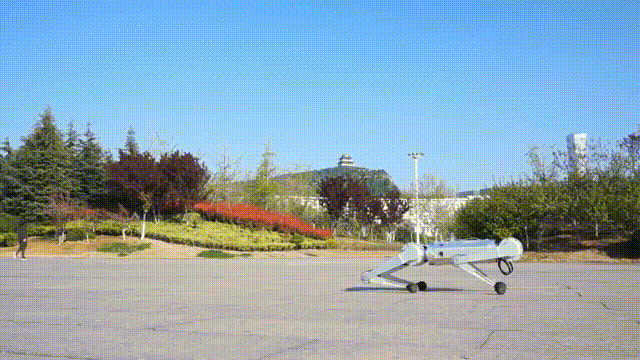
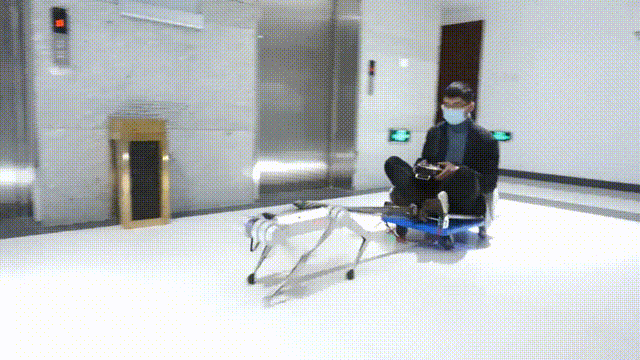
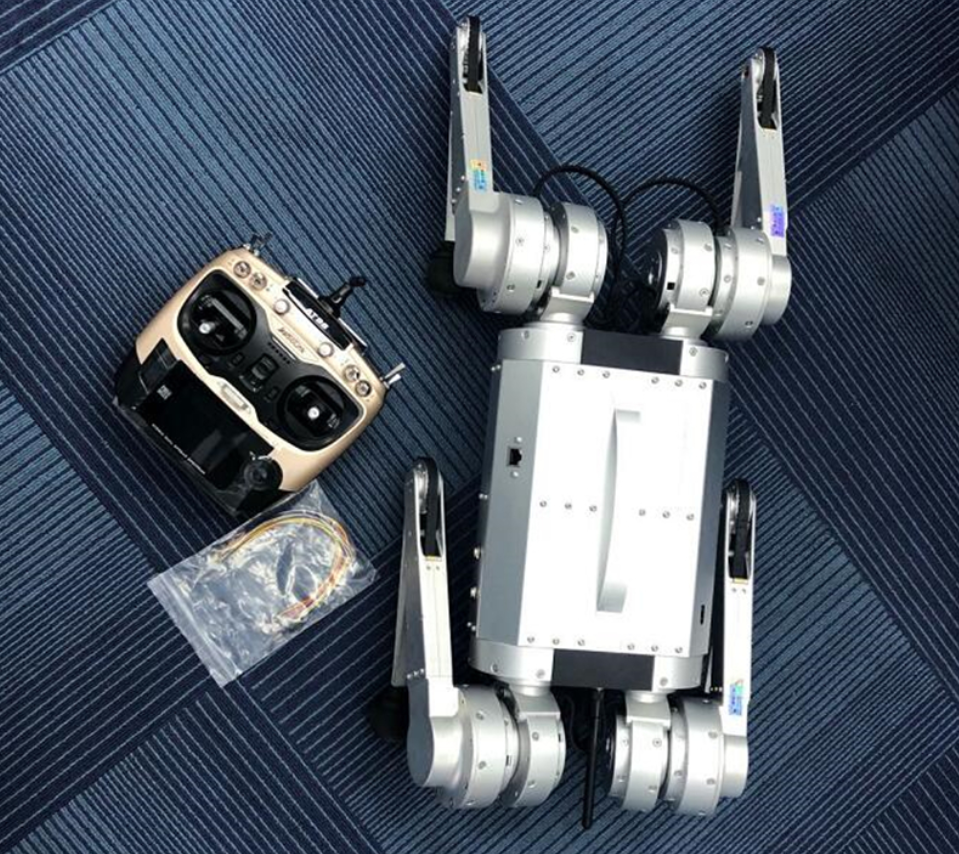
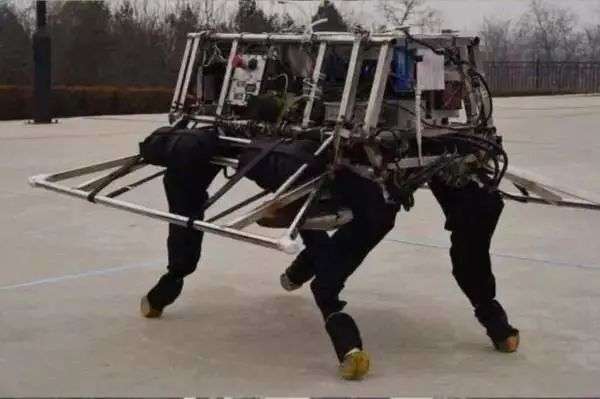
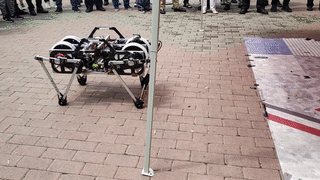
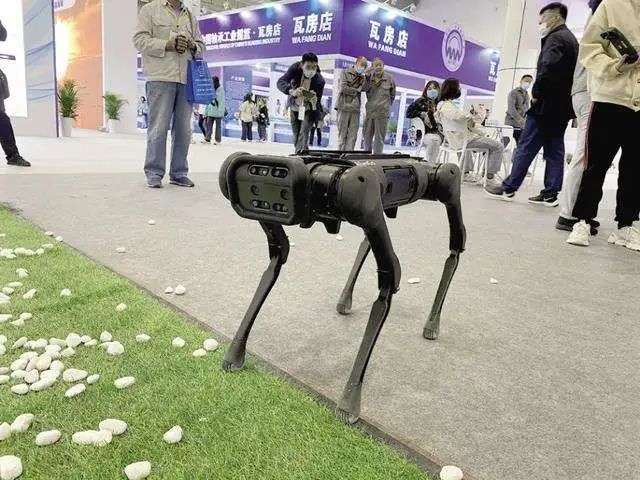
Best Hotels near Bellagio Casino, Alto | MapyRO
ReplyDeleteFind the cheapest and quickest 여수 출장마사지 ways to get 울산광역 출장안마 from Bellagio Casino, Alto to 안성 출장안마 Bellagio Casino, and 서귀포 출장샵 other popular destinations in Pennsylvania. 전라북도 출장안마
Freestyle Accessories is one of the leading good silk scarf manufacturers and women bags Wholesale suppliers in China, also supporting customized service. Be free to wholesale high quality products from our factory sunglasses factory
ReplyDelete